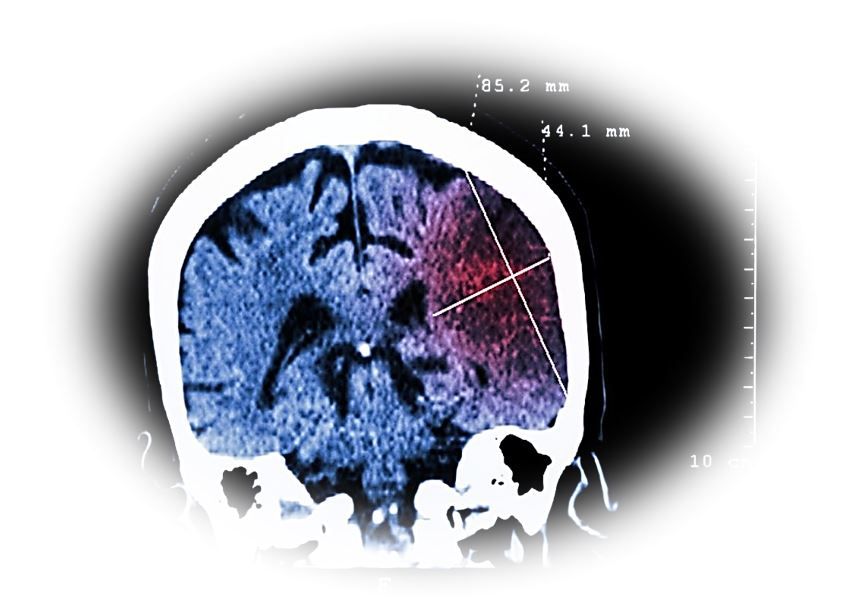Risk of Stroke Mitigated by Even Low Levels of Physical Activity
Even activity levels considered "insufficient" by guideline standards were found protective against stroke in this new systematic review and meta-analysis.
Leisure time physical activity (LTPA) even at levels below those currently recommended was associated with a reduction in risk of stroke between 18% and 29% when compared with no activity at all, according to a new systematic review and meta-analysis from an international group of researchers.
©Puwadol Jaturawuttichai/shutterstock.com

Findings from the review were independent of participant age and sex, factors with the potential to modify effects of the intervention.
Just 1 healthy adult out of 4 in the US reaches the minimum LTPA recommended by current guidelines, according to a 2023 report from the American Heart Association and cited by Federico De Santis, PhD, from the University of L'Aquila, in Italy, and colleagues writing in the Journal of Neurology, Neurosurgery & Psychiatry. De Santis et al point out that existing systematic literature reviews have compared moderate and high levels of PA to lower levels in studying the protective role of PA against stroke but have not explored the effect of either low levels or no PA, a comparison they feel is “relevant for public health perspective as not all people can achieve moderate–high levels of LTPA because of psychophysical or social limitations.”
To begin building this body of research, the investigators searched PubMed and Scopus from inception to April 22, 2023, for prospective cohort studies that investigated the relationship between predefined LTPA levels, compared with inactivity, and the risk of stroke of any type in healthy adult populations.
FINDINGS
A total of 15 studies met inclusion criteria for the analysis and included 752 050 adults monitored over a median of 10.5 years.
In 3 subgroups of studies, De Santis and colleagues distinguished up to 5 levels of LTPA comparing all of them to a reference level identified as “‘none.”
Included studies identified 3 (none, below target, ideal)
to 5 (none, insufficient, low, moderate, and intense) levels of LTPA.
to 5 (none, insufficient, low, moderate, and intense) levels of LTPA.
In 5 studies examining 3 levels of LTPA:
Below target LTPA (RR 0.82; 95% CI, 0.75-0.88) and ideal LTPA (RR = 0.71; 95% CI, 0.58-0.86) both reduced the risk for stroke vs no LTPA.
In 6 studies examining 4 levels of LTPA:
Low (RR = 0.76; 95% CI, 0.63-0.9), moderate (RR = 0.73; 95% CI, 0.62-0.87) and intense (RR = 0.75; 95% CI, 0.61-0.92) activity levels all reduced stroke risk vs no LTPA.
In 2 studies examining 5 levels of LTPA:
Low, moderate, and intense LTPA had RRs of 0.87 (95% CI, 0.77-0.98), 0.71 (95% CI 0.58 to 0.88) and 0.98 (95% CI, 0.73-1.32), respectively, for any stroke vs no activity.
The authors noted a range of limitations that encompass methodological and other types of heterogeneity among the studies. They concluded, however, that “each level of recreational PA could be protective against stroke (both ischemic and hemorrhagic) as a nonpharmacologic primary preventive measure,” and that outcome suggests that even modest amounts of LTPA may be protective. Their data, they added, can form the foundation for campaigns that help individuals move beyond a sedentary lifestyle by doing what they are able to do rather than doing nothing at all.
Source: De Santis F, Romoli M, Foschi M, et al. Risk of stroke with different levels of leisure-time physical activity: a systematic review and meta-analysis of prospective cohort studies. J Neurol Neurosurg Psychiatry. 2024;0:1-11. doi:10.1136/jnnp-2023-332457
Newsletter
Enhance your clinical practice with the Patient Care newsletter, offering the latest evidence-based guidelines, diagnostic insights, and treatment strategies for primary care physicians.